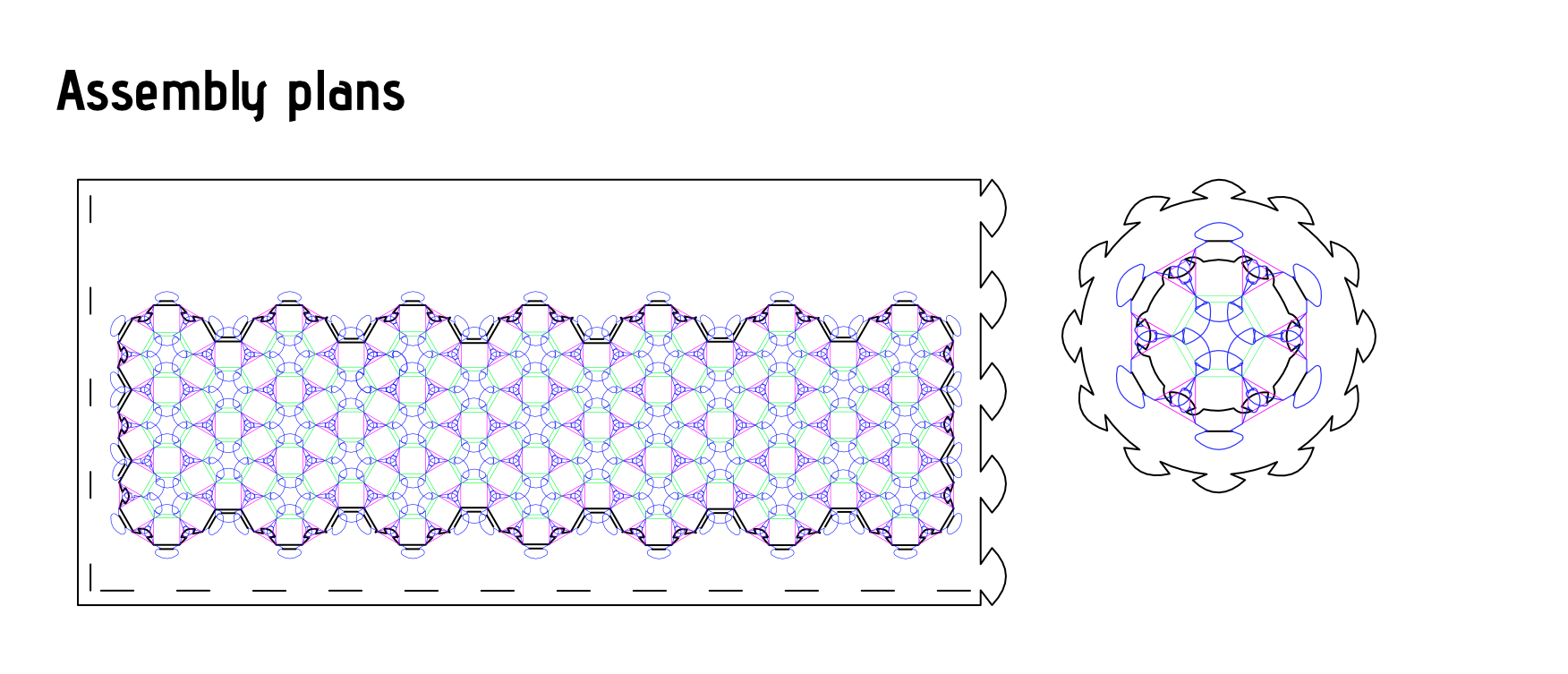Circular Open Source Fashion
Week 3
Inspiration
The object

The modules
The first step of my process was to find a nice shape that can fit one beside the other but can also become a recognizable form. Then, I saw a drawing of a diamond seen from the top and I thought that when simplified, it would be a very nice idea. I went for it.
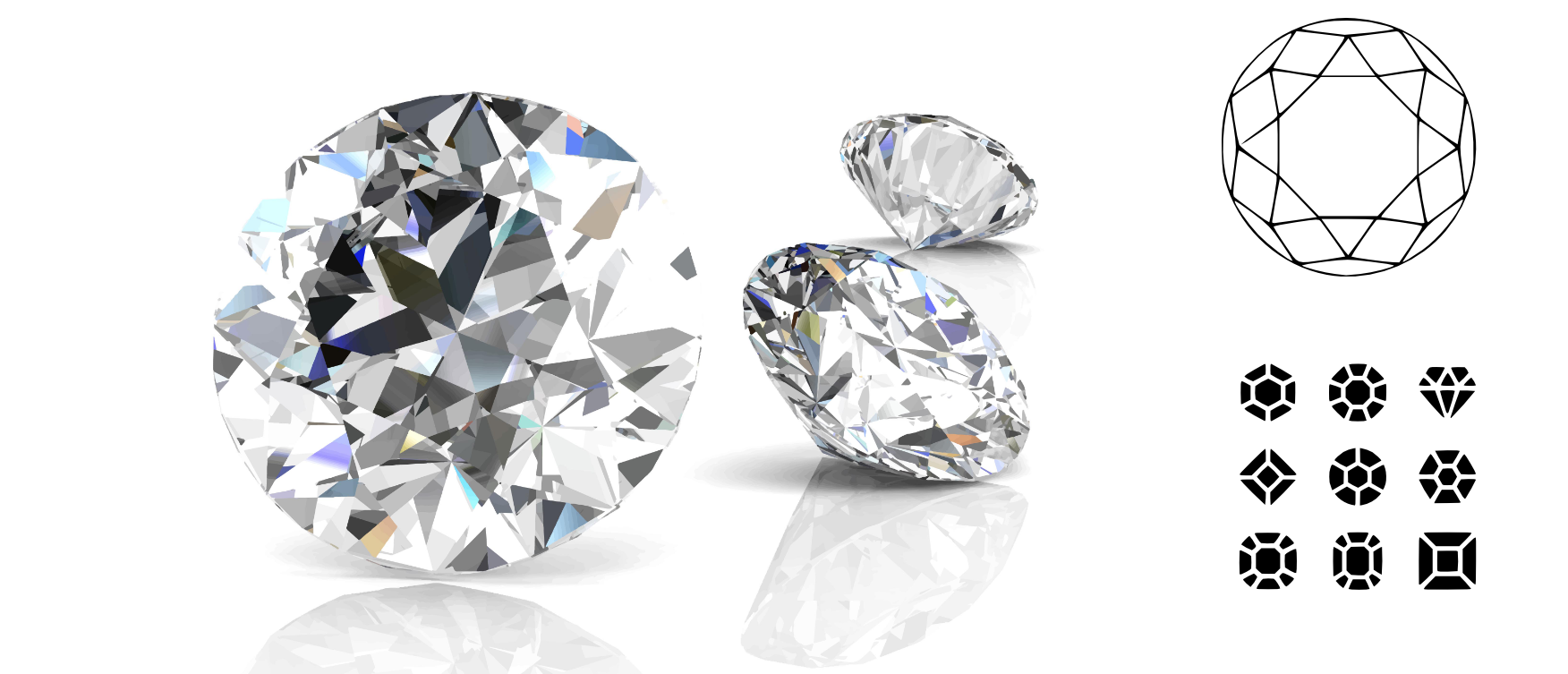
Designing connections
The first step was to simplify the composition of the diamond shape to make a very minimalist. I came with the one bellow, that seemed simple enough (13 pieces), and could allow me to generate secondary shapes.
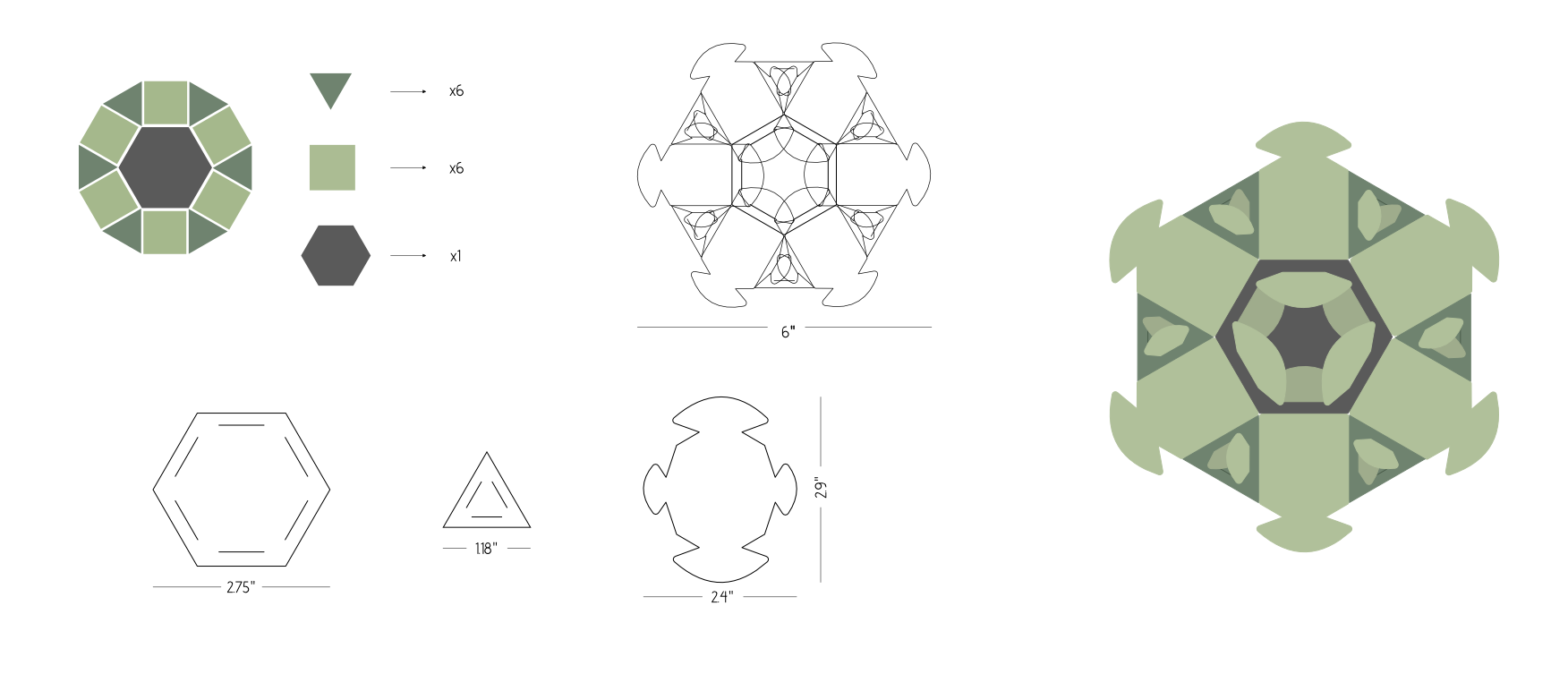
The only thing that I thought I should do was to test the strength of then once connected. I took three times to get it as strong as I wanted them to be and I was always a matter of changing the male part. I did many different tests with those two first connectors in prototyping canvas and wool felt.

The results were all right, well enough to make a skirt but weren't good enough for a final try.
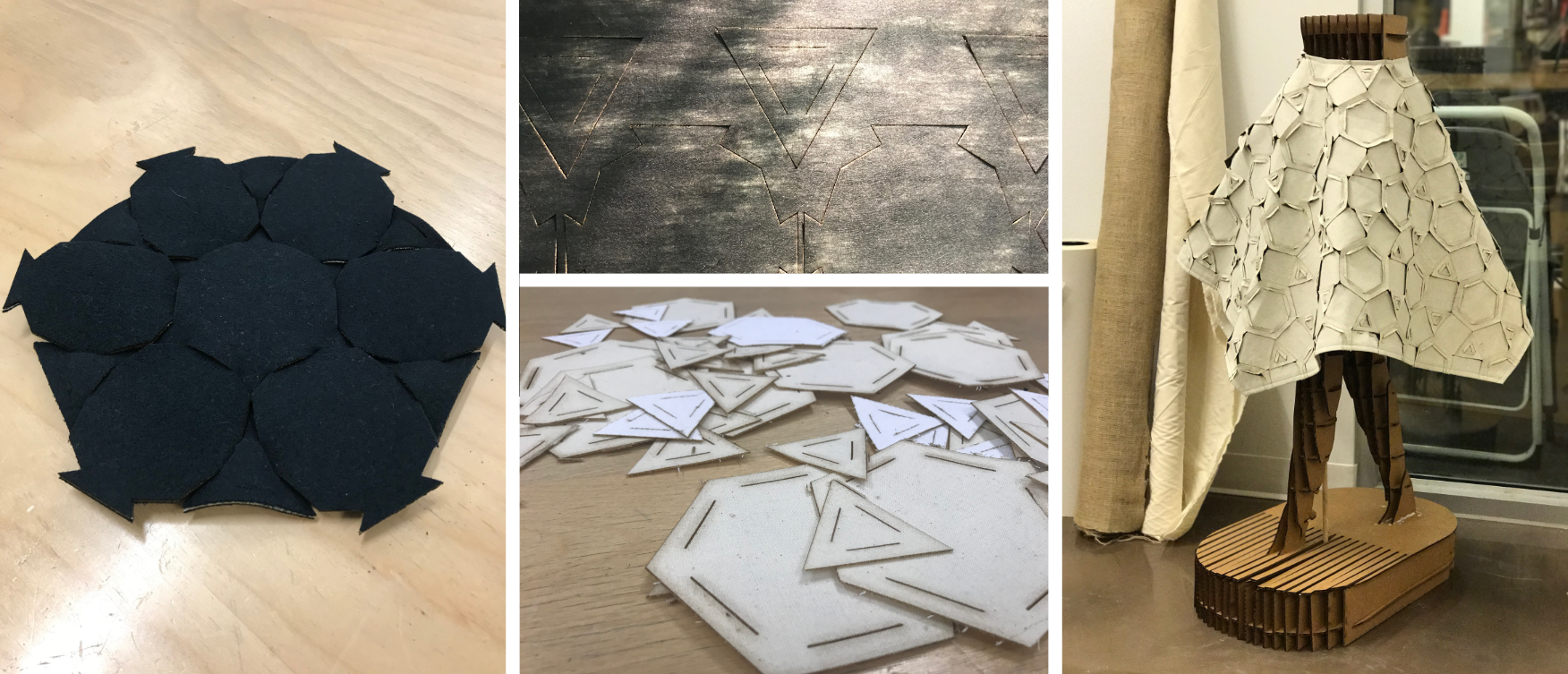
The third one was the charm. They're difficult to assemble but will not detach with weight as the two others did. Just to add a little more useful information, here's a chart for the laser cutter machine and the different types of textiles I used for testing and my final materials.

From there, I was ready to design the plant pot.
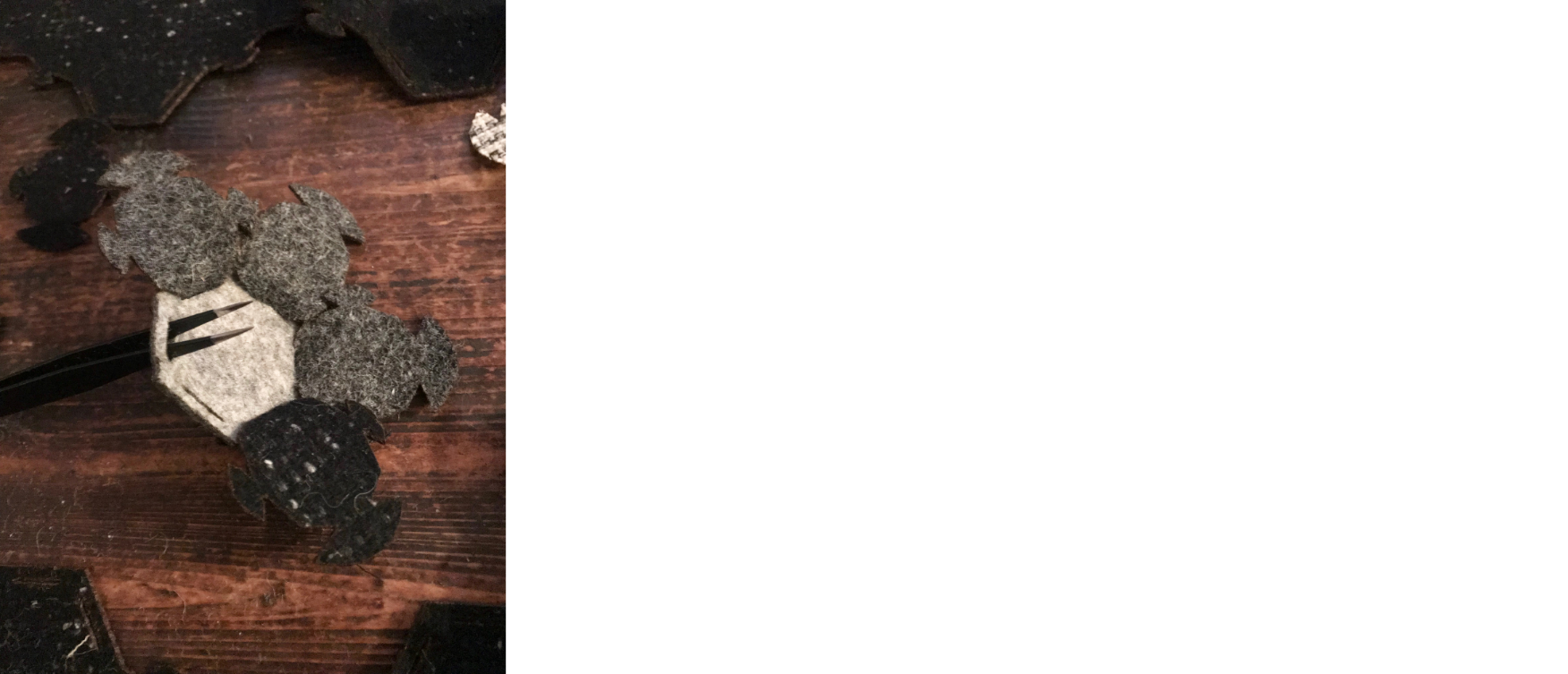
Circular Open Source "textile construction"
Sketch
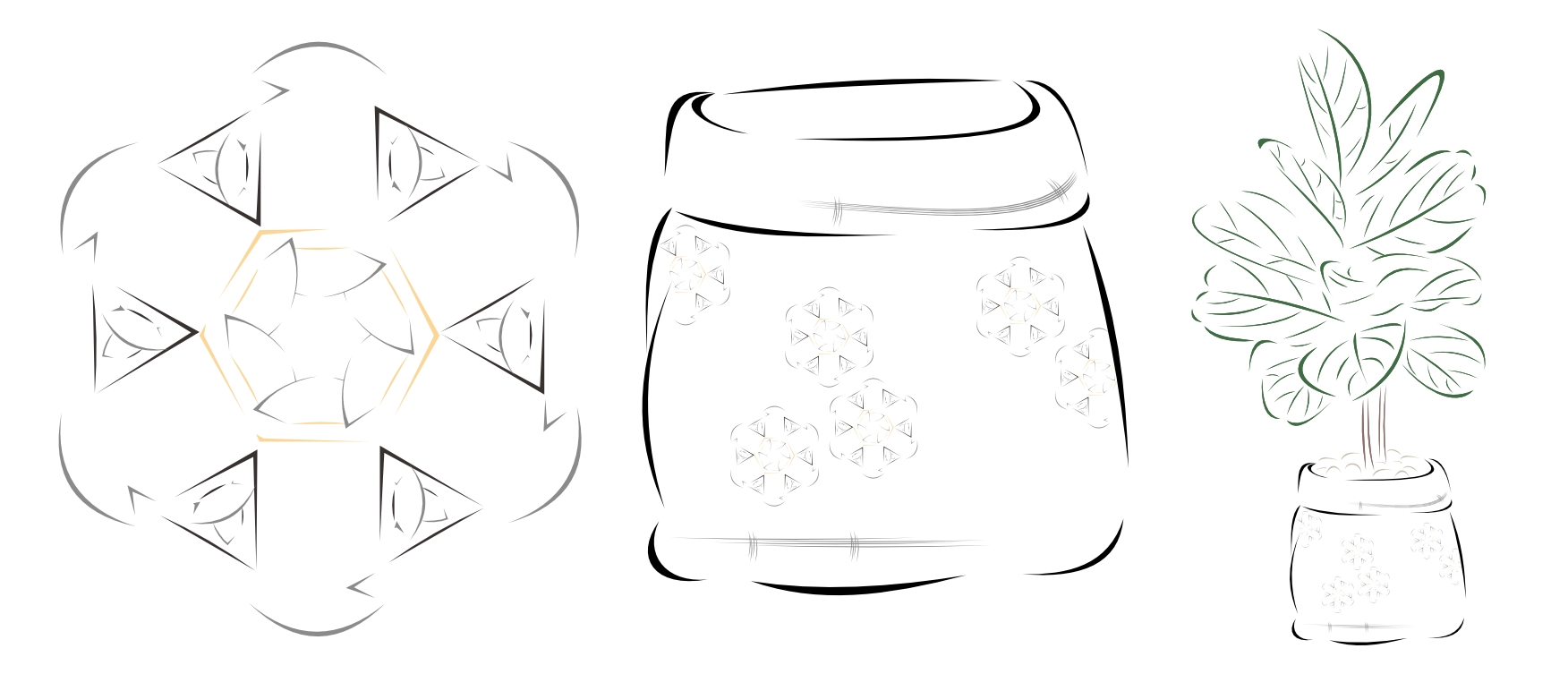
Lasercut plans
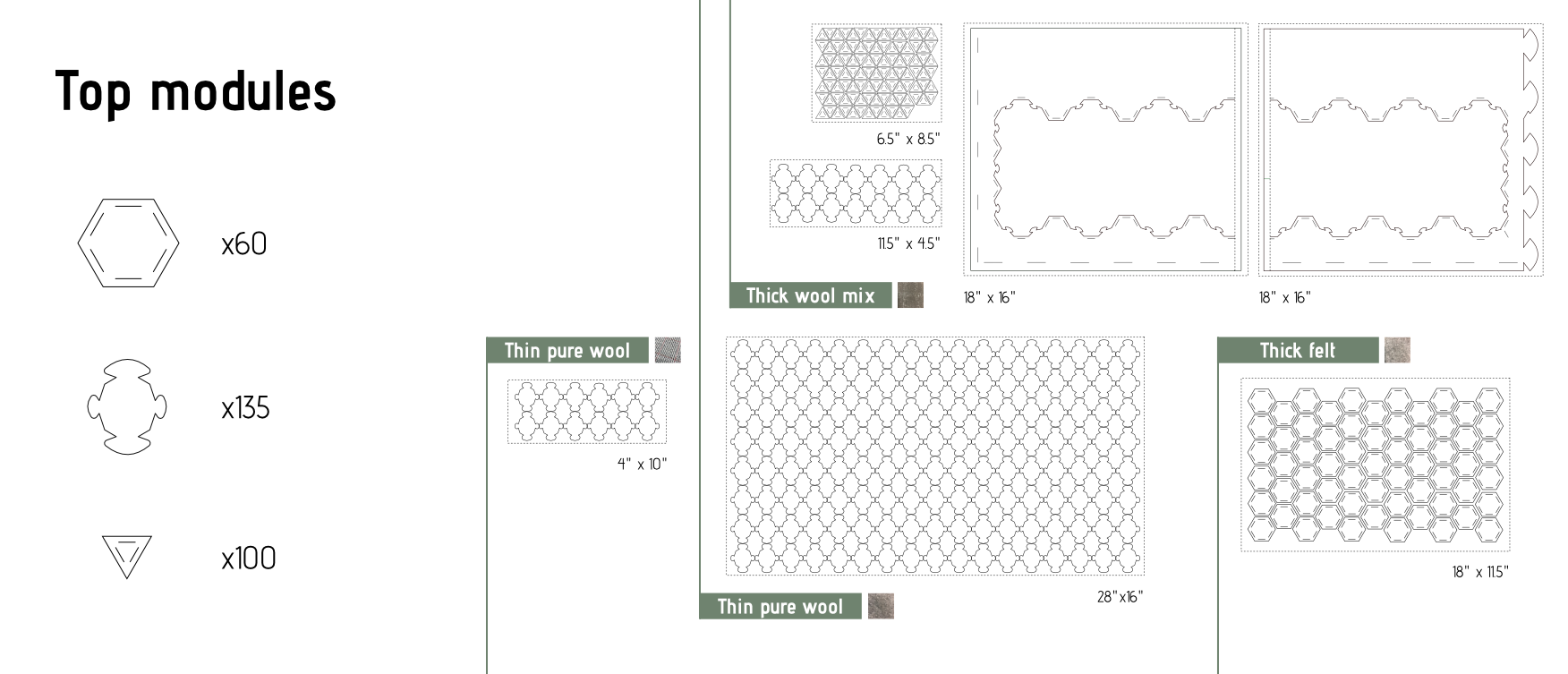
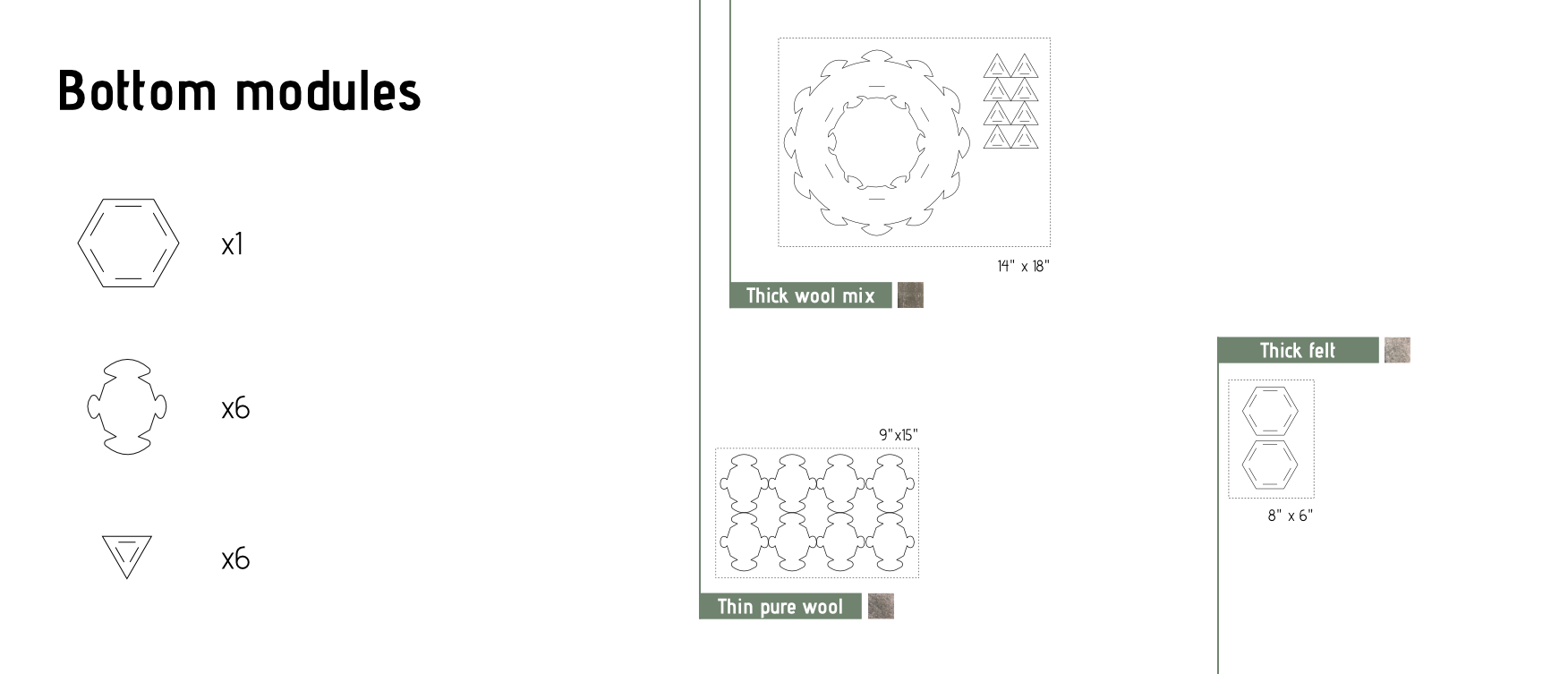
You can download the files here.
Assembly
The assembly process went very well. It takes a lot of patience but overall it's pretty easy. I made a detailed graphic plan that shows where the parts should be. After that, it was a matter of putting a plastic lining inside and fill it with gardening earth and a plant!
